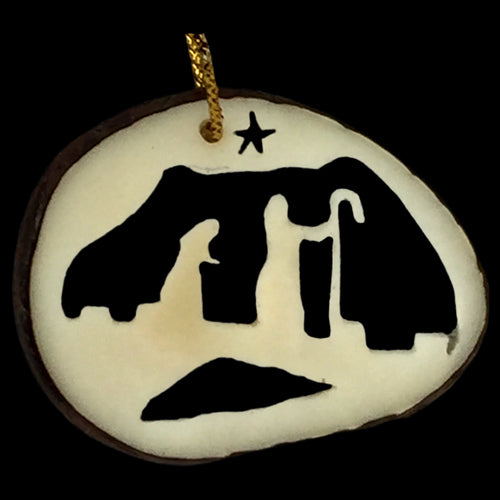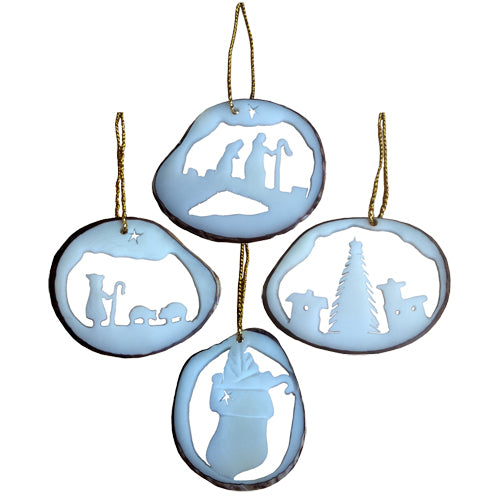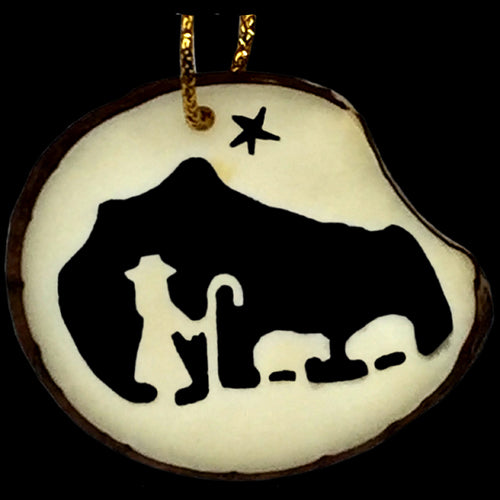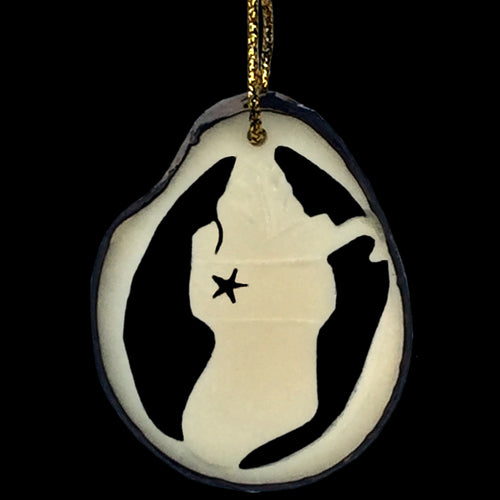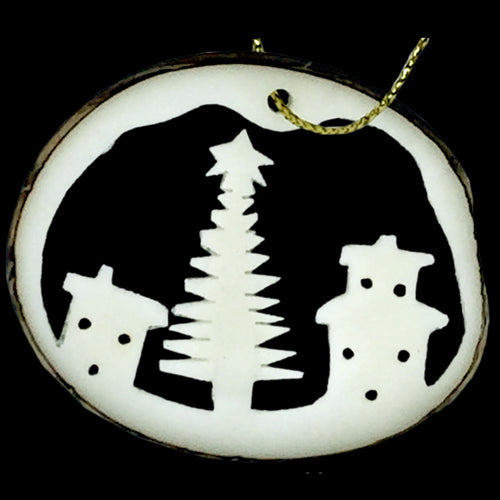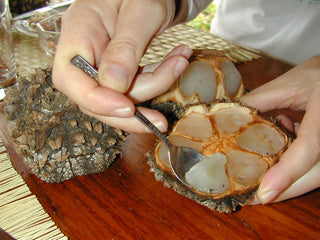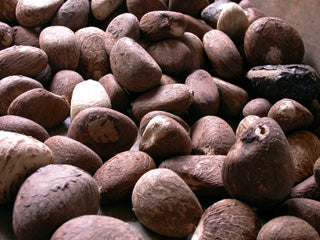OWP
Hand-Carved Tagua Nut Ornament Nativity- Vegetable Ivory-Ecuador
Hand-Carved Tagua Nut Ornament Nativity- Vegetable Ivory-Ecuador
Couldn't load pickup availability
These Tagua Nut Ornament Slices are not just delicate but natural and unique. Tagua nut is a rainforest nut known as vegetable ivory for its likeness to animal ivory. These are seeds that grow in pods called cabezas, from the tagua nut palm tree. Tagua's smooth, hard texture is an ideal medium for carving jewelry, boxes, and other figurines or using the seed slices as beads for necklaces, bracelets, and other craft projects. A shephard with his sheep.
Naya Nayon, an Ecuador-based NGO, counters poverty and deforestation by creating new jobs that depend on conservation and responsible forest management. The organization works with 23 local artisans, mostly working in home-based workshops to create several, beautiful objects from tagua nuts. These nuts grow year-round in Ecuador and can be harvested without causing any harm to the rainforest.
- Average Measurement of each ornament - 1 3/8" high x 1 5/8" wide x 1/8" thick
- Come with a delicate gold cord for hanging
Natural tagua seed slices from Ecuador and fair trade imported.
We encourage you to help save rainforests by considering a Tagua nut purchase. Please read our extended description below by clicking "About the Artisans" for more information on how tagua nut carvings are made, and how they have helped save thousands of acres of rainforest and wildlife habitat.
Share
About the Artisans
About the Artisans
 Joyeria Semilla meaning Seed Jewelry is a small fair-trade workshop in the Andean town of Villa de Leyva, Colombia. Girasol Taborda, a local artisan and social entrepreneur, started the workshop in the mid-1990s.
Joyeria Semilla meaning Seed Jewelry is a small fair-trade workshop in the Andean town of Villa de Leyva, Colombia. Girasol Taborda, a local artisan and social entrepreneur, started the workshop in the mid-1990s.
Joyeria Semilla’s objective is three-folds; to create new jobs, revive Colombia's handicrafts sector and to motivate locals to better manage their natural resources. The organization works primarily with socially and economically disadvantaged youths, single mothers and people with disabilities in the area. The company offers free training in product design, technical training and marketing to new members. Joyeria Semilla has trained them in the craft of jewelry-making.

Caña Flecha or “Gynerium Sagittatum” is a locally found palm tree in the regions of the Caribbean coast. The leaves from this plant are used for making jewelry, woven hats, bags and baskets. The Zenú Indians were and their descendants inherited the tradition of picking veins of the green palm leaf for weaving. These veins were made into woven hats and other products for their personal use.
The Zenú culture is said to have existed between 200BC to1600AD. With the arrival of the colonizers in the 16th century, the indigenous community declined of unknown reasons. Today a very small population remains that claims the inheritance of the almost extinct Zenú tribe. Known for their skills in the construction of major waterworks, canals and irrigation system along with being skilled goldsmiths, examples of their accomplished craftsmanship are found in various museums around the world. Their larger means of subsistence were hunting, farming, fishing and trading.
Caña Flecha is found in abundance in the region, and hence makes for a sustainable and naturally available raw material for these products. Every bit of the plant is utilized – from using in building walls and roofs in houses to food for cattle and medicinal purposes. It is from the central vein of the leaf that the fibers for weaving are obtained. After the hard surface is peeled off, the fibers are left in the sun to dry and undergo a natural tinting process; these fibers are barely about 1 millimeter in thickness and hence call for a lot of skill and patience to weave with. The dried fibers are then processed for natural coloration - some are boiled with lemon to whiten them and some are treated with mud and boiled with plantain leaves to blacken them. The designs are based on ancient motifs and mathematical representations, which are inspired by the early Zenú culture.
